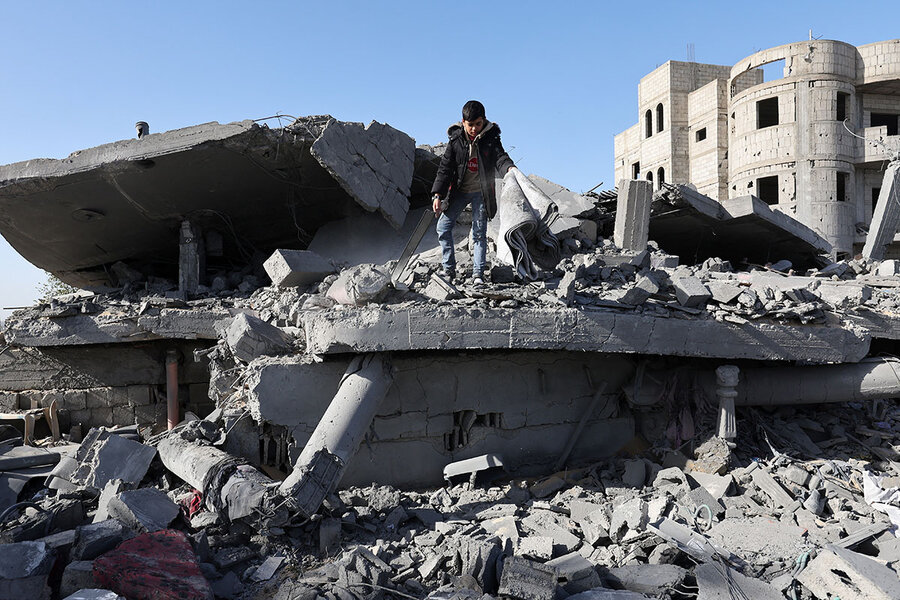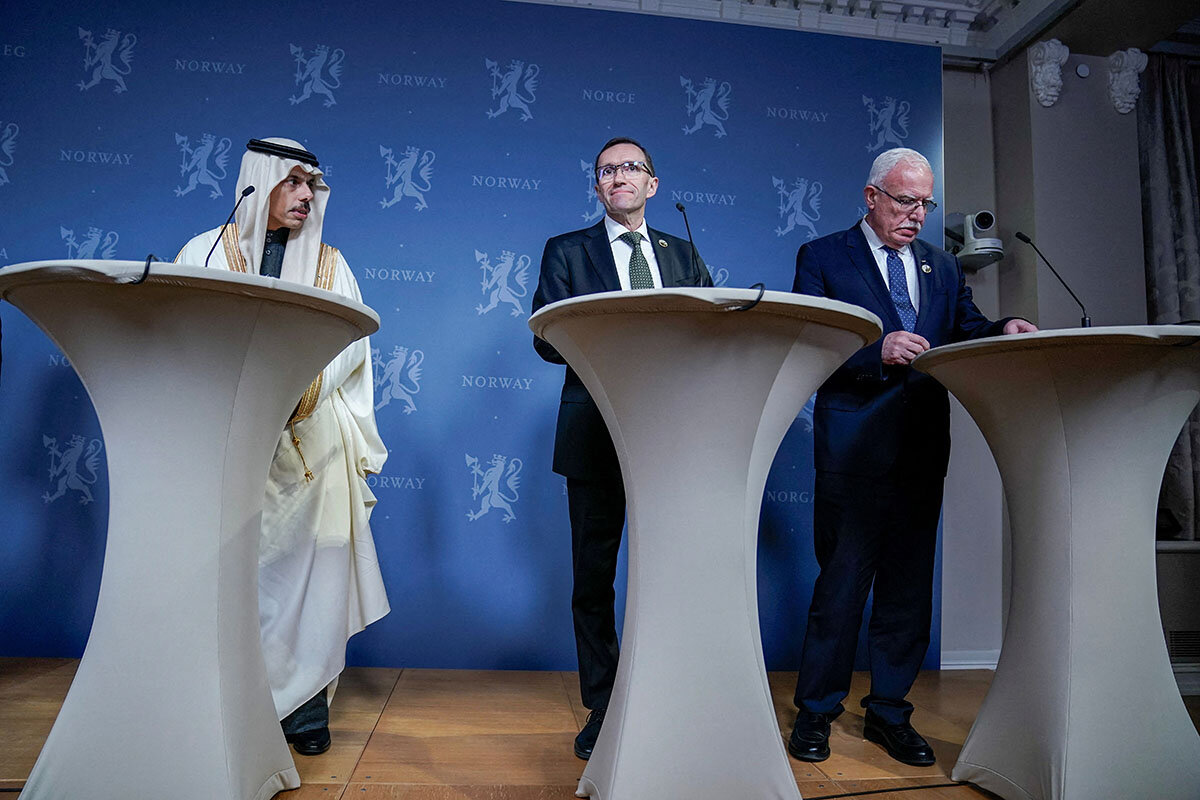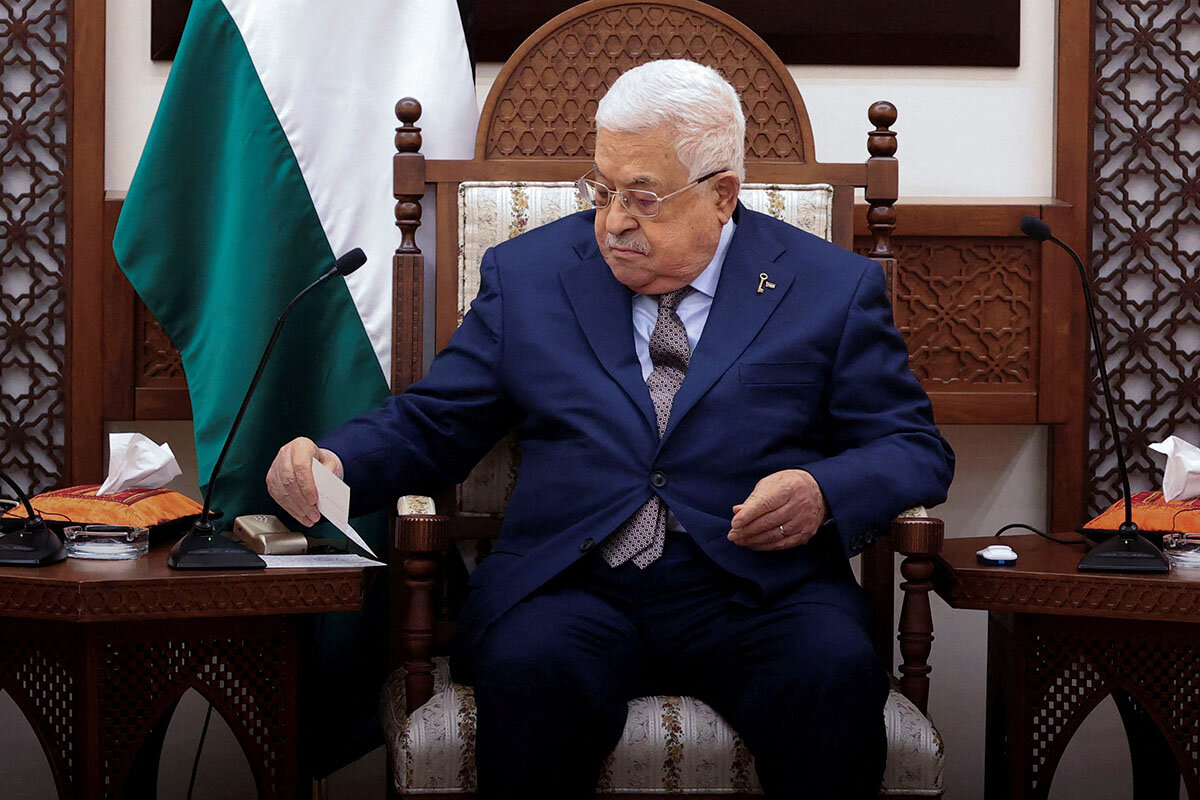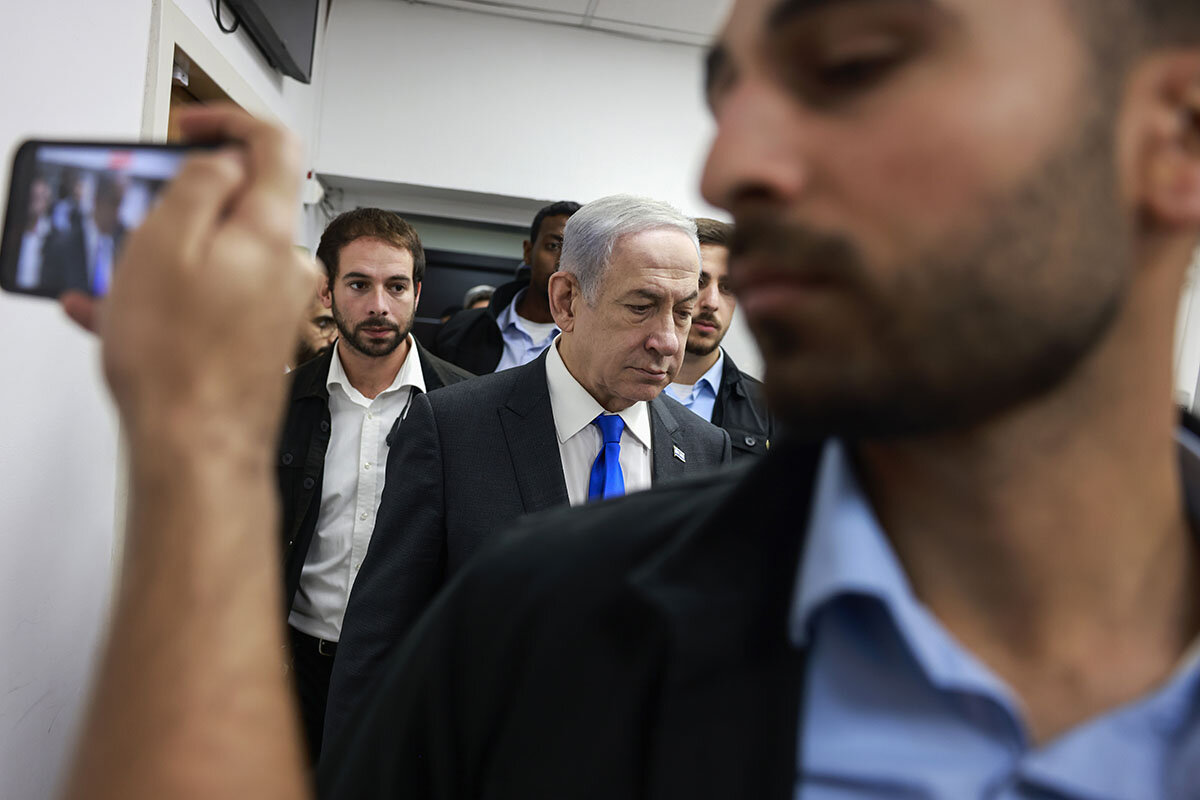A plan for Gaza’s future is taking shape. Obstacles loom.
Loading...
| DUBAI, United Arab Emirates; AMMAN, Jordan; and RAMALLAH, West Bank
A massive postwar reconstruction plan is taking shape for the besieged Gaza Strip. Backed by Gulf billions, the plan is being advanced by Arab states, the United States, and the European Union. It aims to rebuild the coastal strip, overhaul Palestinian governance, improve regional security, and move the Palestinians closer to statehood.
Yet Arab and Western diplomats face challenges from three sources: a far-right Israeli government that rejects a role for the Palestinian Authority in Gaza, a militant Hamas that is far from having been defeated or disarmed by the war, and Palestinian politics.
Why We Wrote This
A story focused onThe trauma of war is catalyzing an Arab, U.S., and European push for a “day-after” plan for Gaza. It faces challenges. How they are met may be the difference between reconstruction and peace, and a security vacuum and chaos.
One Gulf official describes talks with Palestinian factions over a list of names for the new Gaza government as “surprisingly difficult.”
Meanwhile, the PA wants to set a timeline for a Palestinian state – a political horizon that would help it sell the initiative.
Arab states are attempting to use Gulf reconstruction funds as leverage to push Israel to accept a PA role, sending a message to Israel and Washington: No Palestinian Authority, no funds for Gaza.
“The Palestinian Authority is deeply flawed, but they are the only realistic option we have as a moderate governing entity,” says the Gulf official. “We have to hold them to account to make sure this works.”
A massive postwar reconstruction plan is taking shape for the besieged Gaza Strip, if only the combatants and local politics don’t stand in the way.
Backed by Gulf billions and spurred by public pressure, the plan is being advanced by Arab states, the United States, and the European Union. It aims to transform life for the Palestinians and move them closer to statehood, with new support from the Palestinian Authority.
Moves are accelerating after the PA agreed this week to a proposal by the U.S., the EU, Arab Gulf states, Egypt, and Jordan for a “day-after” scenario. The plan seeks to rebuild the coastal strip, unite and overhaul Palestinian governance, and create a Palestinian security force in Gaza to ensure Palestinian and Israeli security.
Why We Wrote This
A story focused onThe trauma of war is catalyzing an Arab, U.S., and European push for a “day-after” plan for Gaza. It faces challenges. How they are met may be the difference between reconstruction and peace, and a security vacuum and chaos.
Ongoing talks in Gulf capitals, Amman, and Ramallah are closing in on tough questions, including who should make up the new Palestinian government, and how to rebuild a territory where practically all infrastructure is destroyed.
Yet outstanding challenges continue to stump Arab and Western diplomats from three sources: a far-right Israeli government that is rejecting a role for the PA in Gaza’s governance, a militant Hamas that is far from having been defeated or disarmed by the war that broke out Oct. 7, and internal Palestinian divisions.
Observers say how these challenges are tackled may be the difference between postwar reconstruction and peace, and a security vacuum and chaos.
A strip. A plan.
Key to the plan is what Arab diplomats describe as a “rapid” reconstruction and humanitarian campaign to alleviate the suffering of Gaza Palestinians, create housing, and restore livelihoods.
Under the plan, Gulf states have set an initial budget of $3 billion annually for a 10-year period, with the United Arab Emirates, Saudi Arabia, and Qatar as the three largest donors, according to a Gulf official who requested anonymity.
The priority of the rapid part of the rebuild will be southern Gaza, where 1 million internally displaced Palestinians have been pushed by the Israeli military. The effort there will be to build housing, schools, hospitals, and water and energy infrastructure, according to those close to discussions.
A parallel, long-term rebuild will be the “re-imagining” of northern Gaza and Gaza City, where the bulk of the population once lived, over a 10-to-15-year period, according to a Gulf diplomat and confirmed by a European diplomat.
In the wake of a united Arab refusal to put “boots on the ground” in Gaza right after an Israeli withdrawal, a compromise has been struck by Arab states, the Biden administration, and the PA to police a post-Hamas Gaza with a grouping of former PA security officers in Gaza. Those officers were forced into retirement following Hamas’ seizure of the strip in 2007.
Gaza governance?
The flow of billions of dollars into Gaza hinges on who, precisely, will govern the strip.
During U.S. national security adviser Jake Sullivan’s visit to Ramallah Saturday, the PA agreed with the European-American-Arab plan to form a technocratic unity government under a “revamped and revitalized” PA to govern both Gaza and the West Bank.
Under the verbally agreed-upon plan, octogenarian PA President Mahmoud Abbas would serve as a ceremonial figurehead for a transitional period, with the unity government providing services, running day-to-day affairs, and overseeing reconstruction.
Yet talks are snagging over the details. Mr. Abbas’ inner circle wants the unity government stacked with loyalists and people from the West Bank. The U.S. and Arab powers, diplomats say, are doubling down, insisting the new government be staffed equally with Palestinians from Gaza and from the West Bank, all apolitical technocrats and civil society members.
“Capable Palestinian technocrats ... don’t receive the attention they deserve,” Mohammed Baharoon, director of the Dubai-based B’huth think tank, says of a technocratic government’s merits.
European, British, and Gulf diplomats’ preference, according to multiple sources, is for the revamped PA to include Palestinian diaspora lawyers, scientists, human rights activists, and business leaders from the West. They would be imbued with a belief in good governance, and free of the bitter divisions and petty rivalries that mark Palestinian politics today.
Meanwhile, the PA is pushing for an international peace conference setting a timeline for a Palestinian state as a condition for promoting the post-Hamas governance plan – a political horizon that would help it sell the initiative to other factions and the public.
“What is missing [in the plan] is a political solution,” says Bassam Salhi, a member of the Palestine Liberation Organization Executive Committee and Abbas ally. “We want a comprehensive vision with the overall end goal of a political resolution, the end of the occupation and recognition of a Palestinian state within 1967 borders.”
But there are also outstanding concerns among Arab diplomats, Europeans, and some Palestinian factions over whether Mr. Abbas and his inner circle, who have restricted freedoms, cracked down on dissent, siphoned millions, disenfranchised most Palestinians, and lost public support, can truly reform and facilitate a new era in Palestinian governance.
Noting Mr. Abbas’ track record, the Fatah Democratic Reform Bloc, a PLO faction that retains extensive humanitarian and civil society networks in Gaza and West Bank refugee camps, is insisting on a firm date for legislative and presidential elections to select new leadership as part of the day-after arrangements.
“No more Abbas games,” Dimitri Diliani, the Reform Bloc spokesperson, says of previous empty reform promises, rejecting “any proposal that imposes Israeli or American conditions on who governs the Palestinian people.”
One Gulf official described ongoing contentious talks with rival Palestinian factions over a list of names for the new government as “surprisingly difficult” and “a headache.”
“The Palestinian Authority is deeply flawed, but they are the only realistic option we have as a moderate governing entity,” says the official, who was not authorized to speak to the press. “We have to hold them to account to make sure this works.”
Israeli opposition
Yet the day-after plan’s most significant challenge may come from Israel.
As talks progress, Prime Minister Benjamin Netanyahu has been increasingly vocal about his refusal of a PA role in Gaza, saying recently, “I will not allow Israel to repeat the mistake of Oslo,” the peace accords that established the authority.
On Sunday Mr. Netanyahu reiterated that he would thwart efforts to revive the two-state solution, saying he is “proud of the fact that I prevented the emergence of a Palestinian state.”
Arab states reportedly are attempting to use Gulf funding for reconstruction as leverage to push Israel to accept a PA role in a postwar Gaza, sending a message through their envoys to Israel and Washington: No Palestinian Authority, no funds for Gaza.
And there are indications Israel may be softening its stance. Tzachi Hanegbi, head of Israel’s National Security Council, voiced in an op-ed Thursday on a Saudi-owned news site a willingness to accept a Palestinian role in Gaza, but that it “will require a fundamental reform of the Palestinian Authority.”
Hamas and public opinion
Another major hurdle is Hamas and Palestinians who have been excluded from the process.
As diplomats push to revive the PA, a recent poll conducted by the Ramallah-based Palestinian Center for Policy and Survey Research reveals a Palestinian public turning its back on the authority and supporting Hamas.
When asked about their preference for postwar rule in Gaza, fewer than 1% of Palestinian respondents said they preferred a unity government returning to Gaza under the supervision of Mr. Abbas, 16% preferred a national unity government without Mr. Abbas, and 7% preferred the PA to return to Gaza as is.
The majority, 60%, preferred Hamas to govern Gaza, but support was split along regional lines: Seventy percent of West Bank residents preferred Hamas rule in Gaza, compared with 38% of Gaza residents, who have lived under Hamas and preferred the PA’s return instead.
Hamas’ popularity has tripled among beleaguered West Bank Palestinians since Oct. 7 from 12% three months ago to 44% currently. Meanwhile, nearly 60% of Palestinians called for the PA to be dissolved, according to the poll. It’s the first time a majority of Palestinians have called for its disbanding.
“Right now, anything that Abbas puts his hand on is going to be immediately seen as suspect by Palestinians,” says Khalil Shikaki, analyst, pollster, and director of the Ramallah-based research center. “To have legitimacy, any future arrangements for Gaza must have the widest support of Palestinians rather than something that the president or his inner circle would be authorizing.”
Palestinian analysts agree that Hamas’ approval for any future technocratic government will be crucial to avoid the militant movement acting as a spoiler. The PA is exploring unofficial talks with Hamas in Turkey, offering seats in the PLO if it gives up armed resistance.
Yet Gulf states, like the U.S., rule out any role for Hamas in a future Gaza as a “nonstarter” hurting efforts to push Israel to accept Palestinian governance in the strip.










